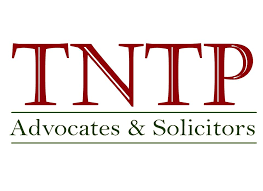The end of the year is usually the time when companies focus on debt collection within that year to recover the capital after one year of production and business. However, debt collection is not a simple matter and often causes “headaches” for companies. Understanding the debts’ nature and classifying them into definite groups plays an essential part in company debt collection. Please find the information regarding the nature of company debts, and the reasons why debt collection is important in the following article of TNTP.
1. What is company debt?
Company debts include all amounts of money including: receivables from customers, payables to suppliers, advances and other receivables and payables.
According to each approach, there will be many concepts related to company debts as follows:
– Receivables from customers: For receivables from customers, it can be understood that when a company delivers their final products to customers with invoices and tax declaration documents, but for some reasons, the customer has not yet made the payment or only made a partial payment. In this case, to collect debts effectively, the company is required to have a clear policy on customer debts and monitor such debts closely.
– Payables to suppliers: In contrast to receivables from customers, a debt payable to suppliers arises after the company has received tools, supplies, goods and services from the suppliers in the course of business but the payment has not been made by the buyer.
– Other receivables and payables: In addition to the above cases, there are other receivables and payables for companies such as deposits, advances, security deposits, shortages of assets for unknown reasons, and damages or lost supplies, etc. When these problems occurs, it is required that companies have an optimal policy to solve the problem of debt control and avoid unnecessary expenses.
Besides, additional payables such as employee salary, the deduction for health insurance, social insurance, state taxes payment are all mandatory payables of companies in the course of business operation.
2. Company debt classification
2.1 Receivables
Receivables include items such as: Cash from sales of goods, revenue from providing services to customers but not yet receiving the full payment, financial investments.
In order to avoid long-term debts, causing consequences of different severity for the company, the debt accountant must ensure to closely monitor and control these cases for debt collection in due course.
Therefore, managing the problems of debt limit, time limit, etc. optimally is an issue that each company needs to handle to avoid significant deficits as well as facilitate the debt collection process at a later stage.
2.2 Payables
Payables include payables to suppliers of tools, instruments, supplies, equipment, raw materials, services, goods, etc. arising in the company’s production and business activities. These payables have not been made by the company such as airfare debts for a business trip for a part of the company which have not been made yet paid to the ticket agent.
2.3 Other receivables and payables
This is understood as other receivables in addition to the receivables from customers, internal receivables, advances and escrow such as: the value of the missed property for unidentified reasons, which are pending for the final decision of the competent authority, receivables for material compensation made by individuals or collectives for causing damage and loss of supplies, goods, etc.
3. The importance of company debt collection
Despite many different types of company debts, receivables are the most important and influential one because the debt collection plays a key role, directly affecting the company’s finance.
Debt collection will help to ensure the company’s business profits. In fact, most companies want to occupy the capital of others as long as possible, especially in this difficult economic situation for the past few years. Most companies misappropriate capital from others through non-payment, or prolonging the payment period. Therefore, when the debt is not recovered, it means that the company’s profit is not guaranteed, which greatly affects its cash flow and financial status.
Another reason why debt collection should be taken into consideration is that the longer a debt is left, the less likely it is to be recovered. Because the debtors who have not been reminded of the payment for a definite period will tend to delay and focus on paying other debts. Moreover, many insolvent debtors may be sued by other creditors and their assets are likely to be enforced by the Court’s judgment, which makes the debtor no longer have any assets to make the payment.
It can be seen that debt collection is extremely important to companies which ensures the financial safety and facilitate the operating systems and avoid possible risks in business activities. To facilitate the debt collection, companies should apply a variety of debt collection policies and measures. If appropriate measures are applied for a specific debtor, the debt collection will be easier. In contrast, applying illegal or inappropriate measures against the debtor can make the debt collection much more difficult.
Above is an article by TNTP analyzing the company debts and the importance of debt collection. Hope this article is useful to companies.
Sincerely,








